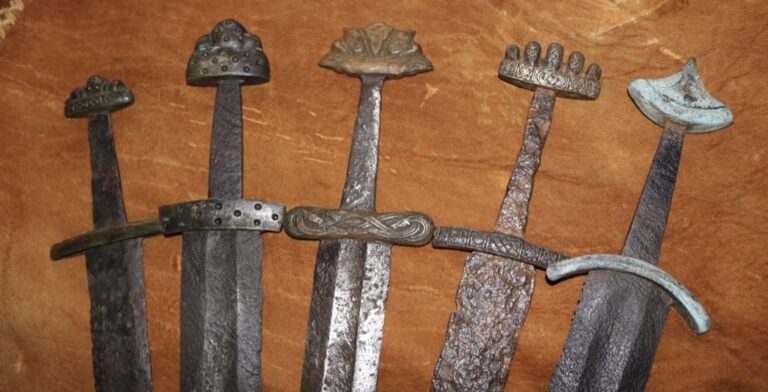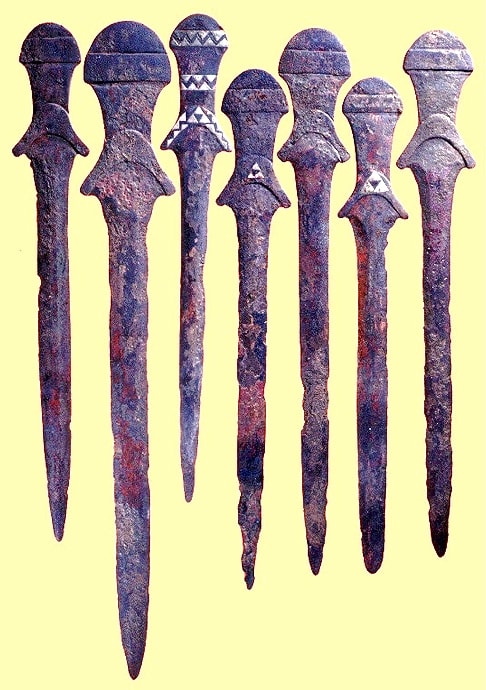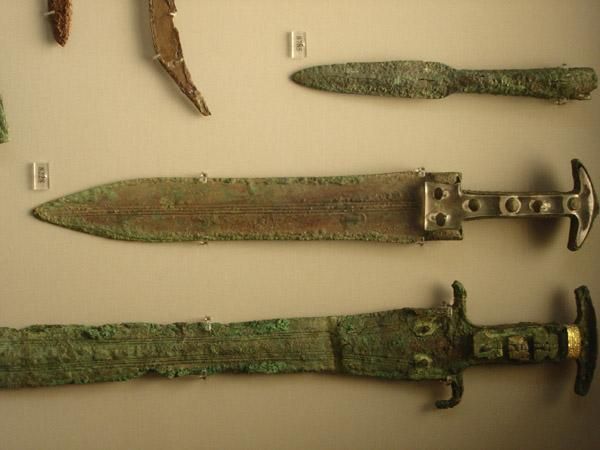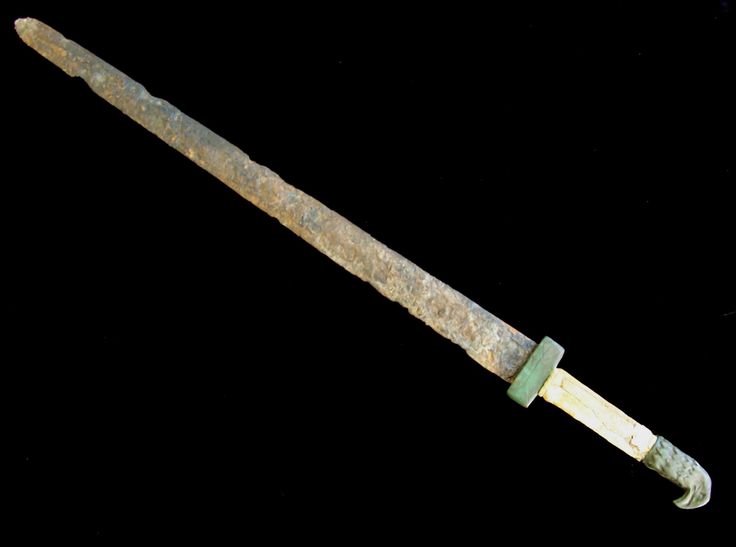
The sword: a sharp weapon that, for millennia, has been used to conquer, defend, and kill as well as to wield power and status.
Who invented the first sword? How did it come about? Was it found in different parts of the world at the same time? This common weapon has actually not been with us that long and was a natural evolution of an everyday tool: stone knives.

Evolution From Rock to Sword
Since the Stone Age, humans have tried to find ways to more easily hunt, cut, and remove animal skin and fur. The first cutting tools were sharp knives crafted from stone (often obsidian or flint) and later made out of bronze. Short slicing and stabbing double-edged blades known as daggers were soon invented, which could be utilitarian (used for everyday tasks) or as a means of defense. The sword is a natural evolution of the dagger as new metal alloys allowed the dagger’s blade to become longer, more flexible, and less brittle. Swords quickly became a primary weapon of offense and defense, though daggers were still very useful for everyday tasks and for defense at close quarters.
Bronze Age Swords: Prototypes for Better Weapons to Come

During the Bronze Age, daggers as long as 60cm (24 in) started making their appearance. Originally, they were not very practical as weapons, as the early blend of metal alloys allowed the blade to bend too easily. Swordsmiths quickly figured out how to cast bronze swords that were surprisingly sharp and strong.
The first real sword of the Bronze Age was most likely created by the Minoan Crete civilization in 1700 B.C. and was about one meter long (39 in). The second type of sword was developed in northern Italy in 1200 B.C. These swords had an incredibly long lifetime, even if the first ones were made out of bronze. In fact, these types of swords were used for centuries, and when the Iron Age replaced the Bronze Age, the metal used to make swords changed but the designs stayed the same. These swords are referenced as “Naue II type.” These swords eventually made their way into southern Europe and throughout the Mediterranean.
China and India
China had its own sword production during the Bronze Age. The Chinese technique was slightly different than the European technique, with softer tin used at times for the edges and diamonds as adornments. Chinese tin bronze was different then its European counterpart and broke more easily as it was less flexible.
Some Bronze Age swords were also found in India, dating between 1700 to 1400 B.C., but it appears swords were probably not commonly used in India until 1000 B.C.
The Broader Adoption of Swords in The Iron Age

During the Bronze Age, swords existed but were not very common among classes lower than the very noble or wealthy. Iron made the sword blade stronger and more flexible. At the beginning of the Iron Age, well-made bronze swords held their own against the new iron blades; but easier access to new alloys and casting methods made swords more common. It is during the Iron Age that we begin seeing entire armies outfitted with swords as a consequence of these new materials and techniques.
Interesting fact: Egyptians armies were often still equipped with bronze weapons even into the Iron Age, as they were slower to adapt to change.

Classical Era
Parthians, Greeks, and Romans all adopted the iron sword as a weapon of choice for close combat. The Roman gladius was a shorter sword used for stabbing and measured about 50-70 cm (24-28 in). Later, during the Roman Empire, the Roman army introduced the spatha, which was much longer
The Sword as a Symbol
Since Roman times, the sword has become a symbol of nobility and privilege. In the Middle Ages, when sword-making skills again increased, new types of swords were invented. The Viking sword, the Frankish blade, and the Germanic sword designs all originated from the original Roman spatha design. Where swords differed most was in the ornamentation. In different tribes and cultures, ceremonial and decorative swords became a symbol of status and were often only used for sacred rituals.